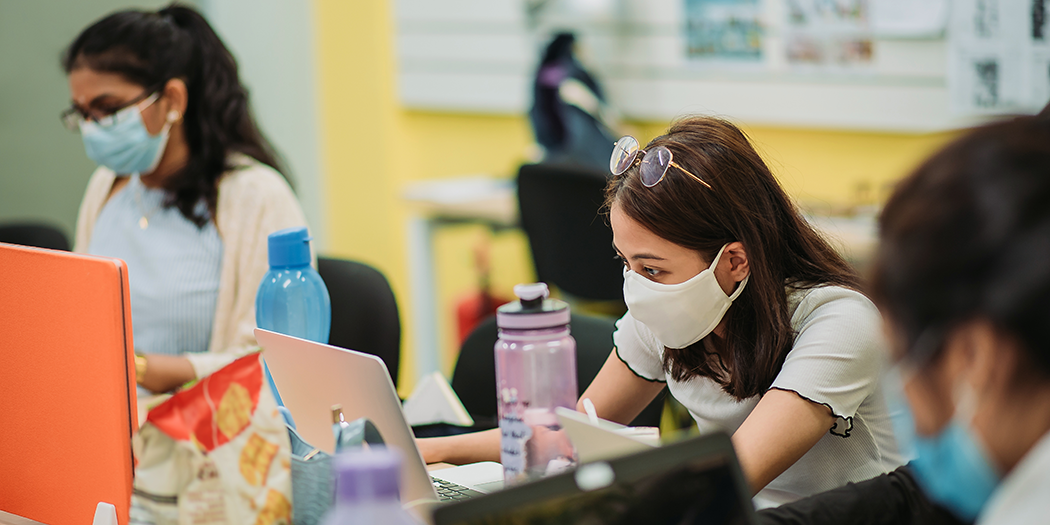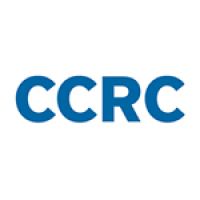By Clive Belfield and Thomas Brock
In March 2020, the start of the COVID-19 pandemic immediately upended the world of work. In a prior post, we looked at how disruptive it was for community college graduates in the first months of the pandemic. As we described, although all workers felt the shock of the pandemic, community college degree-holders were relatively insulated from losses in income, unemployment, and quitting the labor market entirely. This protection—mediated in part by increased telework and access to healthcare—significantly reduced economic insecurity for community college graduates relative to workers without postsecondary credentials.
In this post, we provide updated information on the experiences of community college graduates as the pandemic reaches the end of its second year. We look at whether community college degrees continue to protect graduates and whether the initial disruptions are becoming permanent features of the labor market.
We draw on new Census Bureau data for the analysis. Every 1–2 weeks since the end of April 2020, the U.S. Census Bureau has surveyed households on their economic activity in the time of COVID-19. The surveys provide near real-time snapshots of how the pandemic is shaping household work patterns. Each round of the survey involves a random selection of 100,000 addresses from across the country that are scientifically selected to represent the entire population. We analyzed data from over 530,000 respondents ages 25–64 who graduated from high school or earned an associate degree (i.e., high school graduates and community college graduates) and who completed a survey between April 2020 and October 2021. These months capture the immediate shock of the pandemic and its persistent effects almost two years later.
Economic Outcomes for Community College Graduates
On average, community college graduates have significant labor market advantages over high school graduates. This was true before the pandemic, and it is still the case across the 20 months of the pandemic.
National labor market data from the Bureau of Labor Statistics illustrate the gaps in experience by education level. Before the pandemic, people with “some college” (which includes community college graduates) earned 13% more on average than high school graduates. As of September 2021, this gap had grown to 15%, as the “some college” group was less likely to be pushed out of the labor market by the pandemic and less likely to be unemployed. These are economically meaningful advantages. However, these data do not distinguish between people with different amounts of “some college” and so do not precisely identify the returns to community college.
Using the Census data, we can perform direct comparisons between community college graduates and high school graduates. Across three dimensions, we can see how COVID-19 affected these groups’ labor market experiences both immediately and over the course of the pandemic.
First, the pandemic significantly reduced employment rates. The first figure shows the proportion of high school graduates and community college graduates who worked in the last seven days. In April 2020, the shock of the pandemic caused employment rates to fall at least 10 percentage points below pre-pandemic levels, to 50% and 60% of the working-age population. As businesses responded, employment rates rose by 10 percentage points by the end of the summer. However, the last year shows a more adverse trend: a dip in the last quarter of 2020 and then another drop in the summer of 2021. In fact, employment rates have fallen back to levels similar to those during the initial pandemic shock. Importantly, throughout the entire period, community college graduates have been working at much higher rates than high school graduates. This gap has been very stable, remaining at 10 percentage points from spring 2020 to winter 2021.
Worked in Last Seven Days
Second, a significant number of workers were laid off directly because of COVID-19. In deciding whether to work, lots of families have struggled with personal, family, and financial constraints, and some were reluctant to work and risk COVID-19 infection. But many workers had no choice: The pandemic caused either a direct layoff, a reduction in business (furlough), or a temporary or permanent business closure. These COVID-19 unemployment rates are shown in the second figure. Again, the initial shock was extreme, with 20% of adults reporting a COVID-19 related layoff. But after that shock, the rates declined, stabilizing at 5% of workers for the last six months. Here too, community college degrees offered some economic protection: COVID-19 layoff rates were 2–3 percentage points lower than those of high school graduates for the first year of the pandemic (although by October 2021, the rates had fallen and equalized across all education levels).
COVID-19-Related Unemployment
Third, many workers have directly experienced COVID-19 and so have been unable to work. People directly affected by COVID reported that they had not worked over the previous seven days because they were either sick with coronavirus symptoms, caring for someone with coronavirus symptoms, or concerned about getting or spreading the coronavirus. The third figure shows the trends over the course of the pandemic. It took a few months before COVID-19 illnesses impacted employment, but in the summer of 2020 the impact rose to 4–6%, where it stabilized up to the present day. Notably, community college graduates have experienced much lower rates of direct COVID-19 unemployment than high school graduates.
Affected by COVID-19
Unsurprisingly, these labor market challenges have created economic insecurity. We focus on two: housing insecurity and difficulty meeting expenses. Both show an initial shock followed by uneven declines in economic insecurity. The insecurities are significantly worse for high school graduates.
Trends in housing insecurity are shown in the next figure. Immediately, the pandemic caused almost one in five households to report housing insecurity (i.e., a lack of confidence in their ability to meet their mortgage payments or rent). This insecurity has declined twice since: once in summer 2020, and then again in March 2021. Since then, housing insecurity has stabilized at approximately one in eight households. Education plays an important role. Community college graduates report considerably less housing insecurity than high school graduates. Initially, the gap was very large (at 5 percentage points), but it has slowly narrowed to 2 percentage points.
Housing Insecurity
Households have also experienced difficulties in meeting other expenses over the course of the pandemic. The next figure shows reports of significant or very significant difficulties. With the shock of the pandemic, more than a third of adults reported these difficulties. As the pandemic progressed through to the end of 2020, these difficulties rose sharply. It took until March 2021 for rates to fall below the initial shock level. Now, three in 10 adults report difficulties meeting their expenses. However, the figure clearly shows high school graduates reporting many more difficulties than community college graduates, and that the gap has remained stable over the entire period at 8 percentage points.
Difficulty With Household Expenses
What Is Next for Workers as the Pandemic Continues?
These trends show how the initial shock of the pandemic has lingered: Participation in the labor market is still down, and economic insecurity persists. Potentially, these trends represent a new normal for workers and families. If so, they may mean a decline in labor market returns for new cohorts of community college graduates.
Encouragingly, a new analysis suggests that the pandemic is making community college skills relatively more valuable. Occupations most affected by the pandemic have two characteristics. One is that they are “high-contact,” requiring extensive and repeated interactions with clients or coworkers. This contact has become more difficult, reducing the productivity of workers in these occupations and making them more susceptible to substitution by machines or the internet. The other characteristic is that they are “inflexible,” meaning the work cannot be done under alternative arrangements (such as from home). For these occupations, tasks have changed (e.g., to be socially distant), and workers are exposed to COVID-19 more frequently while demand by customers and clients is likely to be lower.
Community college graduates work in many occupations, some of which are high-contact and inflexible. Educational occupations (from pre-school to college) are high-contact, but they are somewhat flexible if instruction can be moved online. Maintenance and repair occupations (such as plumbers or electricians) are inflexible, but they are often low-contact. Perhaps the hardest hit occupations for community college workers are in healthcare (such as dental technicians or nurses); these jobs are both high-contact and inflexible. Similarly, high school graduates work in many occupations. But, critically, a much higher proportion work in occupations that are both high-contact and inflexible, including healthcare support, hospitality, and food preparation and service. Therefore, the labor market for high school graduates is more likely to be disrupted and depressed as the pandemic continues.
What will happen next is uncertain. If occupational change does favor low-contact and flexible jobs, then the advantage for community college graduates is likely to grow as the pandemic enters its third year.





